Deck Privacy Ideas
9 DIY & Designer Fixes for Deck Privacy – Ideas That Actually Work

Spending time on your deck should feel comfortable and private, but open spaces can sometimes leave you exposed. Whether you want a quiet place to relax, a spot to host friends, or simply a way to block unwanted views, the right design choices can make a big difference. You can create a deck that feels both stylish and secluded by choosing privacy features that fit your space and needs.
This article explores nine practical options that balance function and appearance. From modern screens to natural materials, you will see different ways to shape your deck into a more private and inviting area. Each idea aims to give you control over how much privacy you want while keeping your outdoor space open and enjoyable.
Laser-Cut Metal Privacy Screens
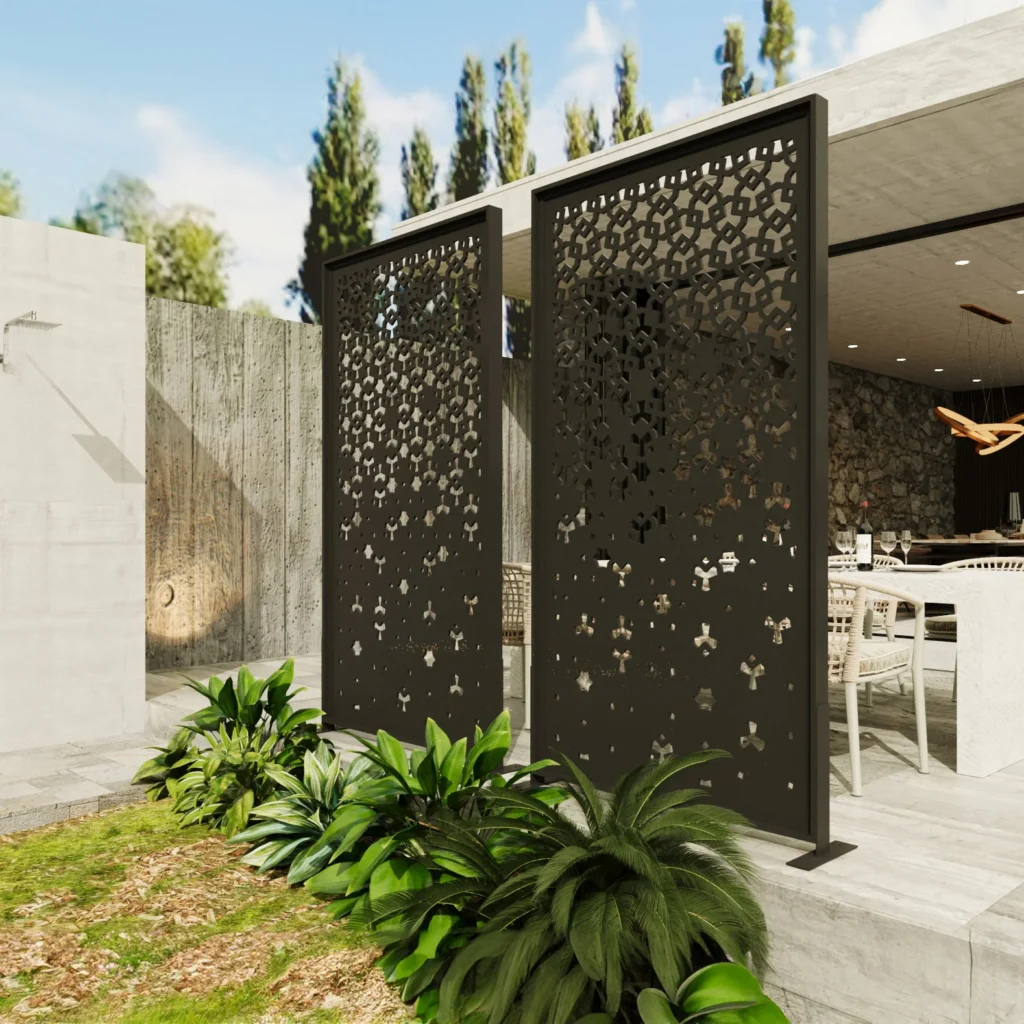
You can use laser-cut metal screens to create privacy while adding a decorative element to your deck. These panels come in many patterns, from simple geometric shapes to more detailed designs, giving you control over how much light and visibility you want.
You can mount them as standalone screens, attach them to railings, or use them as partitions between different areas of your outdoor space. Their sturdy construction makes them suitable for year-round use with little maintenance.
These screens also function as art. When sunlight passes through the cutouts, the patterns create shifting shadows across your deck or patio. At night, you can add lighting to highlight the designs and give your space a more defined look.
You can choose from aluminum, steel, or other metals, often with powder-coated finishes that resist rust and weather damage. This makes them a practical choice if you want something long-lasting that still looks polished.
Because they serve both as dividers and decorative accents, laser-cut metal screens work well for decks, balconies, or garden areas where you want privacy without building a solid wall. They let you define space while keeping an open, modern feel.
Pergola with Side Panels
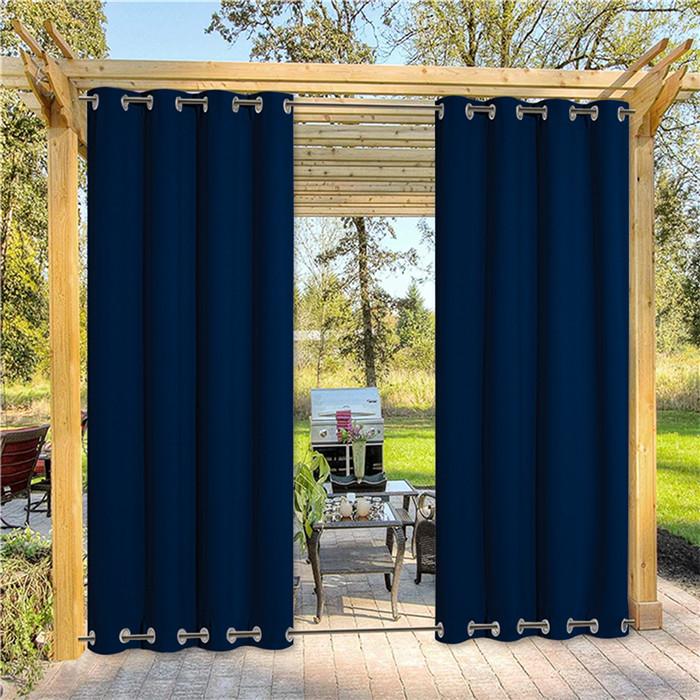
Adding side panels to your pergola helps create a more private and comfortable deck space. Panels can block unwanted views while still letting in light and air. This makes your outdoor area feel more enclosed without losing its open design.
You can choose from solid panels, lattice, or slatted wood depending on how much privacy you want. Lattice and slatted options allow airflow and filtered light, while solid panels provide stronger coverage.
Climbing plants are another way to enhance side panels. Vines like ivy or jasmine can grow along the structure, softening the look and adding natural shade. Over time, this creates a living wall that feels both private and inviting.
Side panels also give you flexibility in design. You can match them to your deck materials for a uniform look or use contrasting finishes for a modern style. This simple addition can make your pergola more functional and visually appealing.
Retractable Fabric Shade Walls
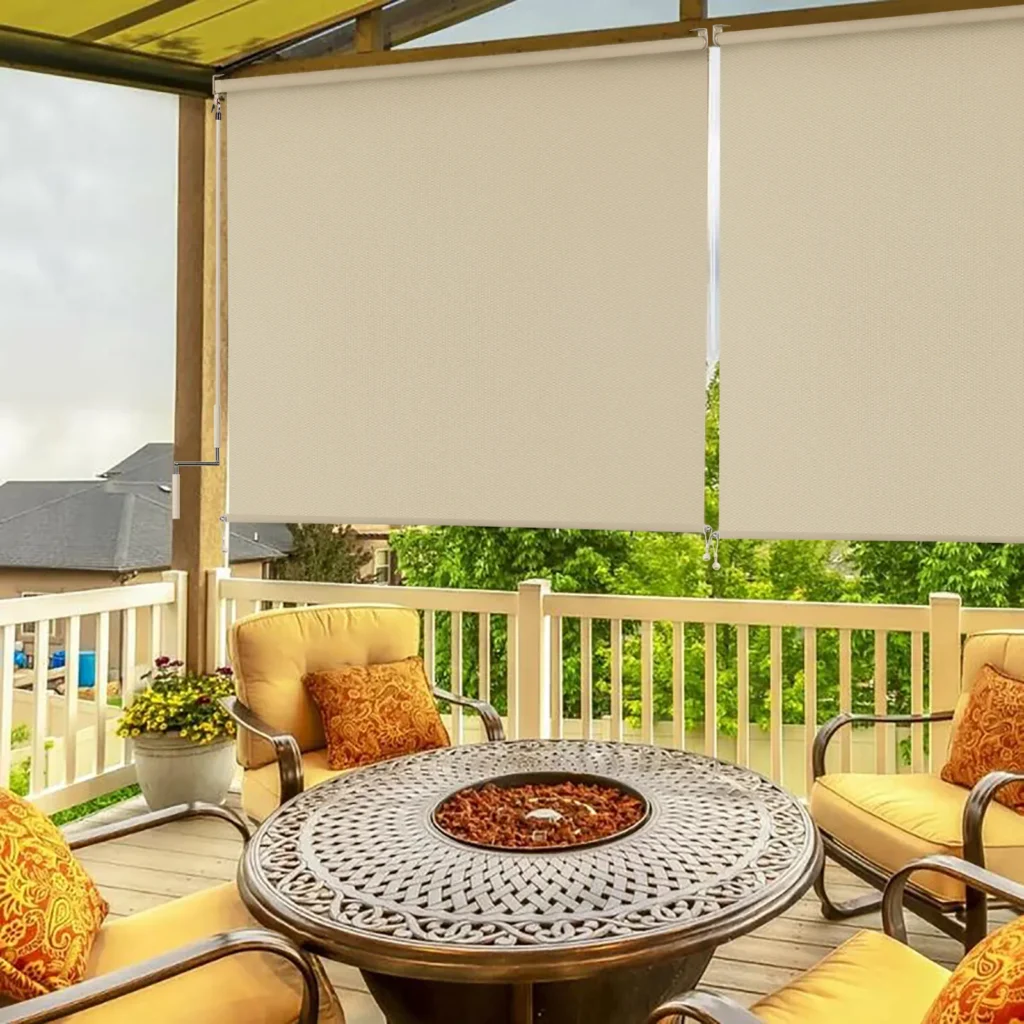
Retractable fabric shade walls give you a simple way to add privacy to your deck without building permanent structures. They roll down like blinds, letting you block views when needed and open the space back up when you want fresh air and sunlight.
You can choose from a range of fabrics, including options that filter light or provide complete coverage. This flexibility allows you to control how much privacy and shade you want at different times of the day.
Many systems feature sleek tracks or frames that blend into modern outdoor designs. When retracted, the fabric stores neatly, keeping your deck open and uncluttered.
You can install these shades on the sides of a pergola, along a railing, or even as freestanding panels. This makes them useful for both small decks and larger outdoor areas.
Motorized versions let you adjust the walls with a remote, while manual options use a simple pull system. Both provide reliable function and easy operation.
By adding retractable fabric shade walls, you create a flexible outdoor area that adapts to your needs for privacy, comfort, and style.
Hanging Outdoor Curtains
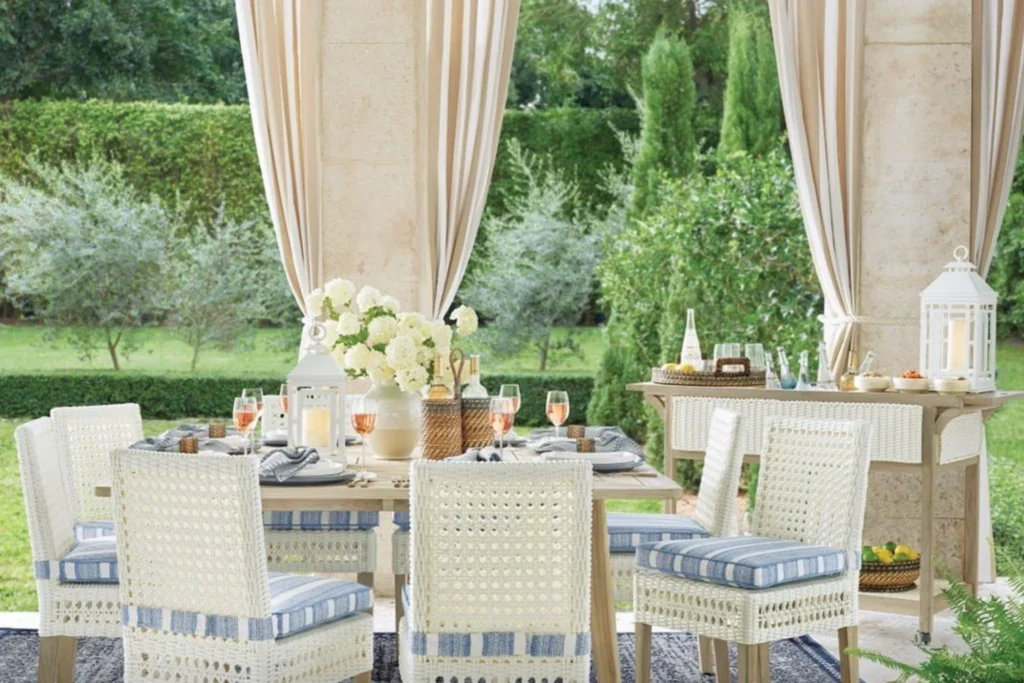
You can use outdoor curtains to create a simple and flexible privacy wall. Weatherproof fabrics resist sun and moisture, making them practical for year-round use. Choose light or neutral colors for a soft look, or go with bold tones to add style to your deck.
A pergola works well as a frame for hanging curtains. You can attach rods or wires to the beams and slide panels open or closed as needed. This setup gives you shade and privacy without blocking airflow.
If you do not have a pergola, you can mount a tension rod between posts or railings. This option is easy to install and does not require permanent changes. It also lets you adjust or remove the curtains when you want a more open space.
Deck railings can also support outdoor curtains with brackets or hooks. Hanging panels along the railing creates a low, breezy enclosure that feels casual but still adds privacy. This method works well for smaller decks or porches.
By choosing durable fabric and a sturdy hanging system, you can create a private area that still feels open and comfortable. The curtains move with the wind, adding shade and seclusion while keeping the space inviting.
Modern Slatted Wood Divider
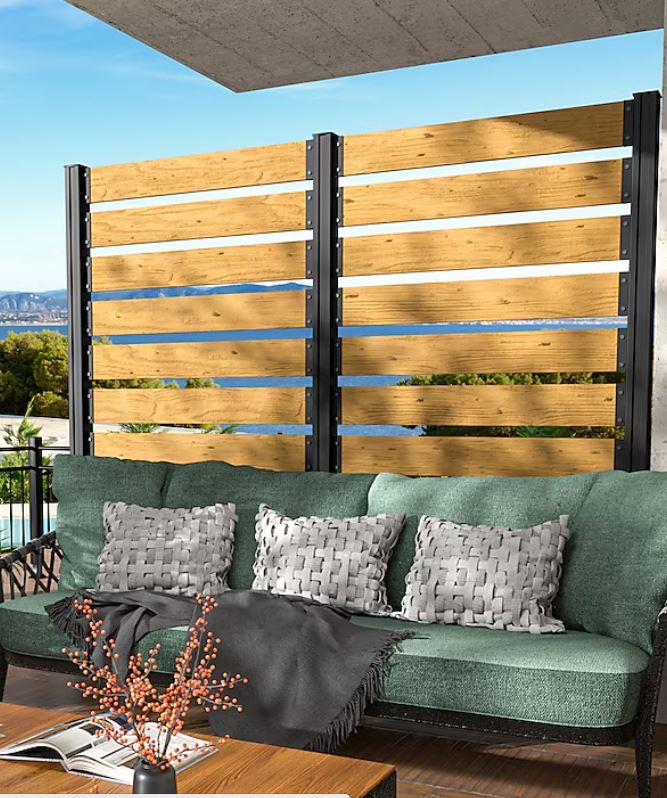
A slatted wood divider gives your deck privacy without closing off the space. The gaps between the boards allow light and air to pass through, so the area feels open and comfortable. This makes it a practical choice if you want privacy but dislike solid walls.
You can install the slats vertically or horizontally depending on the look you prefer. Horizontal lines often create a wider feel, while vertical slats can make the space appear taller. Both styles keep the design clean and modern.
Choosing the right wood is important for durability. Cedar and redwood resist weather well, while treated pine offers a budget-friendly option. You can leave the wood natural, stain it for warmth, or paint it to match your home.
A divider like this also works well as a backdrop for plants or outdoor furniture. The simple design blends with many styles, from minimalist to rustic. By adjusting the spacing of the slats, you can control how much privacy and light you want.
Gabion Rock Wall
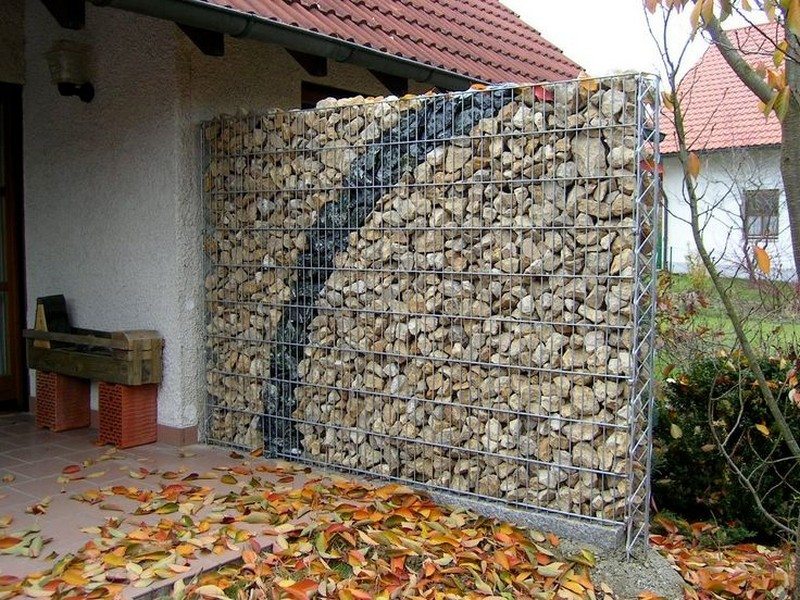
A gabion rock wall uses wire cages filled with stones to create a strong and natural-looking structure. You can build it in different sizes, making it useful for both small patios and larger yards.
This type of wall works well as a privacy screen because it blocks views while still blending with the landscape. The rocks give the wall a natural texture, while the metal frame adds a modern touch.
You can choose the type of stone you want to fill the baskets, which allows you to match the color and style of your outdoor space. Some people even use recycled materials, which can reduce waste and cost.
A gabion wall also requires little maintenance compared to wood or living plants. Once built, it stays in place and handles weather changes well.
If you want privacy without a heavy or polished look, a gabion rock wall gives you a balance of strength, function, and simple design. It fits well in both modern and rustic settings, making it a flexible option for your deck area.
Frosted Glass Panels
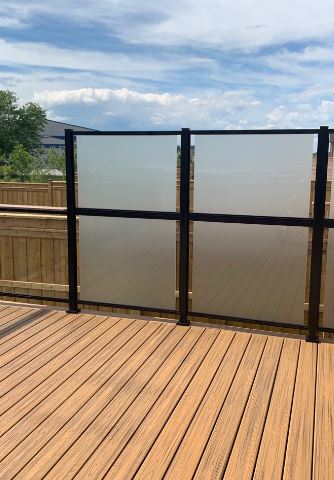
Frosted glass panels give your deck or balcony a clean, modern look while adding privacy. They block direct views but still let in natural light, so your space feels open rather than closed off.
You can choose full frosted panels for maximum privacy or tinted options for a softer effect. Both styles work well in urban settings where neighbors are close, and you want to reduce visibility without losing brightness.
These panels often come framed in aluminum or steel, which adds durability and a sleek architectural detail. The frames can match your deck railing for a uniform appearance or contrast for a bold design choice.
Because glass is easy to clean and resistant to weather, it requires little upkeep compared to wood or fabric screens. Occasional washing keeps the panels clear and sharp, maintaining their upscale look over time.
If you want a balance of privacy, light, and style, frosted glass panels offer a practical solution. They create a refined backdrop for outdoor seating areas and help define your deck as a private retreat.
Accordion Folding Divider
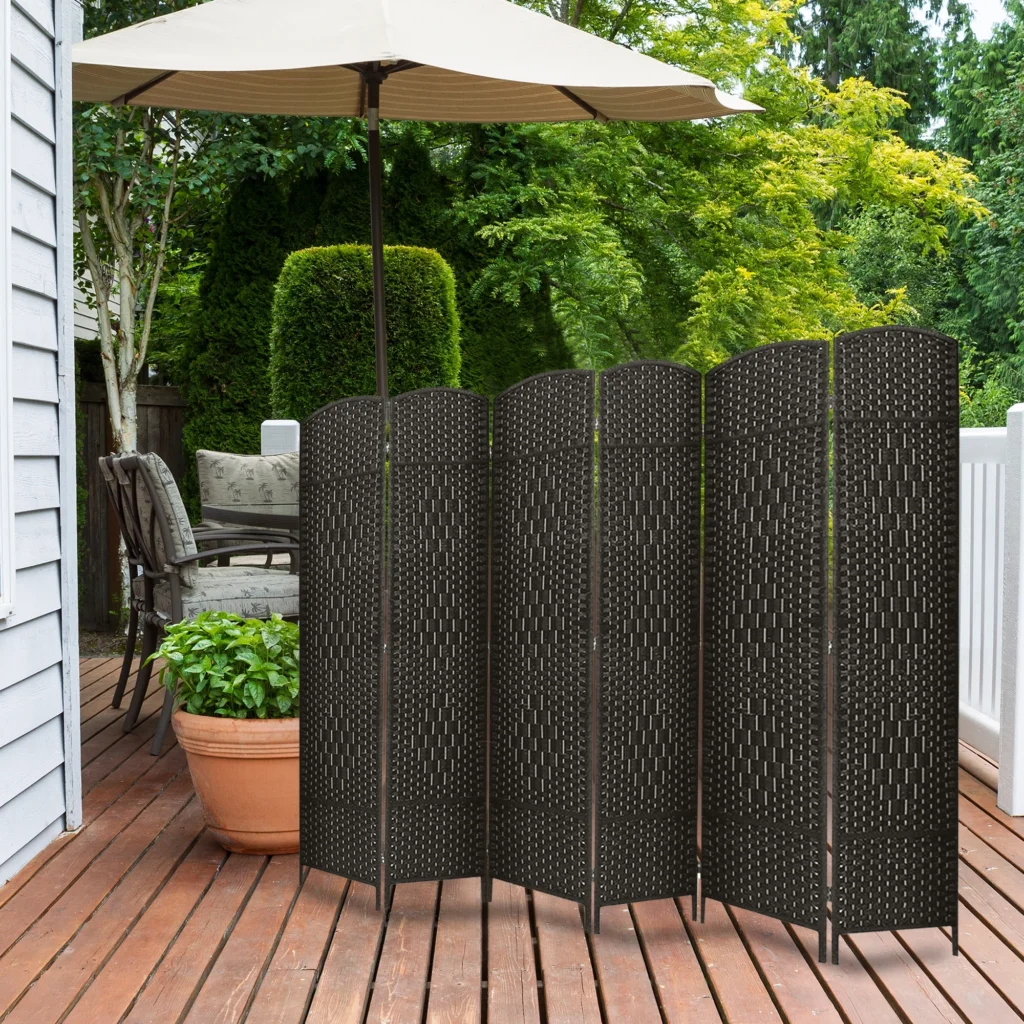
An accordion folding divider gives you flexible control over your deck’s privacy. You can expand it when you want more seclusion or fold it back to open up the space. This makes it useful for decks that serve different purposes throughout the day.
You can find these dividers in materials like wood, metal, or weather-resistant fabric. Some designs have panels that allow light through while still blocking direct views. This helps you maintain privacy without making the area feel closed in.
Because the divider is portable, you can move it to different spots on your deck as needed. It works well if you only want privacy in certain areas, such as near seating or dining zones.
Many accordion dividers are easy to set up and store. When folded, they take up little space, which makes them practical if you have a smaller deck. You can also use more than one divider to create larger screened sections.
Movable Privacy Screen
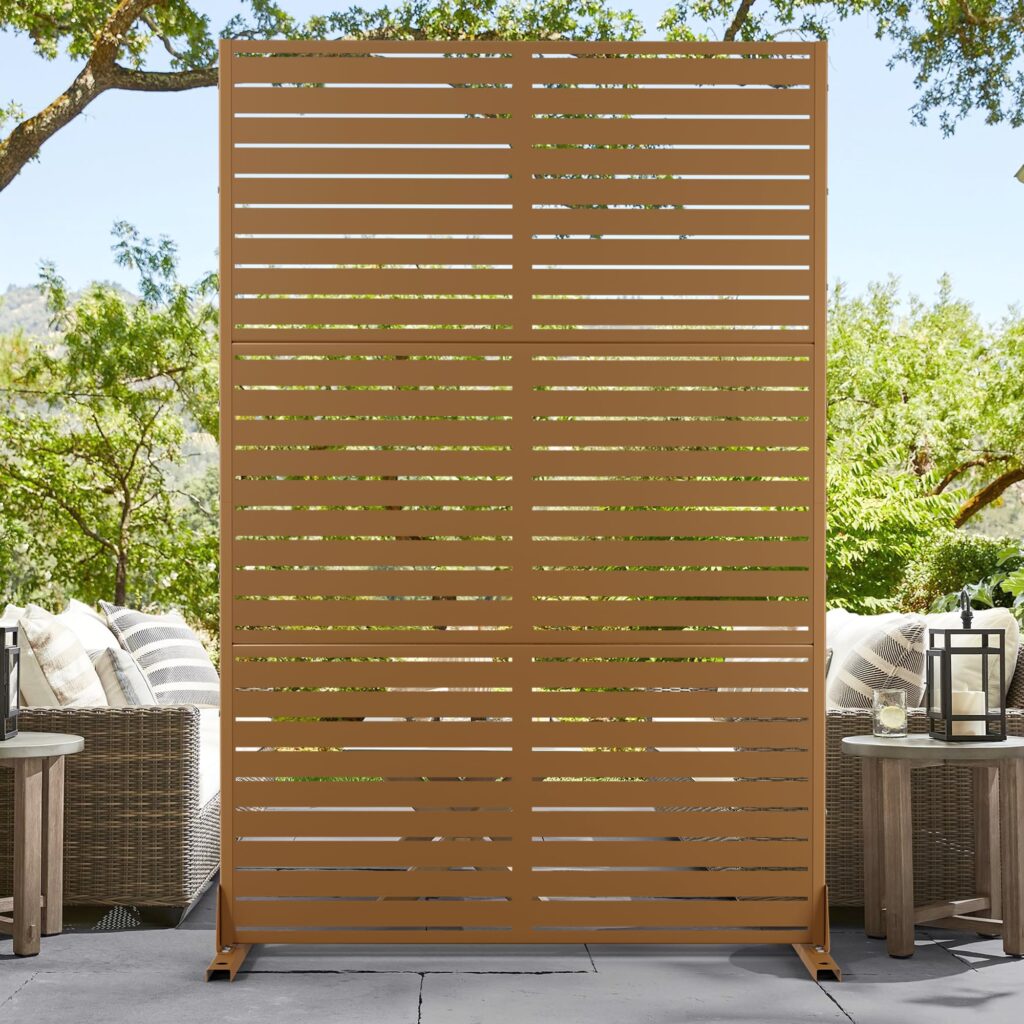
A movable privacy screen gives you flexibility when you want to block views without making permanent changes to your deck. You can set it up where you need it and fold or store it when you don’t. This makes it a practical choice for renters or anyone who wants an easy option.
You can find freestanding screens in many materials, including wood, metal, or fabric. Some designs fold like panels, while others stand on a base that you can shift around. This allows you to adjust your setup for shade, wind protection, or privacy.
Because these screens are not fixed, you can rearrange them to suit different gatherings. You might use them to create a private corner one day and open up your deck the next. The versatility makes them useful for both small and large spaces.
When not in use, you can fold and store the screen in a shed, garage, or against a wall. This keeps your deck open and uncluttered. It also helps protect the screen from weather, which can extend its life.
Key Considerations for Deck Privacy
When planning privacy features for your deck, you need to think about the materials you choose, the rules that apply in your area, and how much upkeep you are willing to handle. Each of these factors affects cost, appearance, and how long your privacy solution will last.
Material Selection and Durability
The type of material you use has a direct impact on both the look and lifespan of your privacy feature. Wood is common because it is affordable and easy to customize. However, it can warp, rot, or fade if not sealed and maintained.
Composite and vinyl panels last longer and resist weather damage, but they often cost more upfront. Metal screens, such as aluminum, provide strength and durability with minimal upkeep, though they may not offer the same warmth as natural wood.
You should also consider how well the material matches your deck structure. A mismatch between railing and privacy panels can make the deck look disjointed. Choosing a material that balances strength, style, and cost will give you the most value.
Local Building Codes and Regulations
Before adding privacy screens or walls, you need to check local building codes. Many municipalities limit the height of deck railings and attached structures. If you build higher than allowed, you may face fines or be required to remove the addition.
Some areas also require permits for permanent structures such as fences or roof extensions. Temporary solutions like freestanding screens or planters usually face fewer restrictions, but it’s best to confirm.
If your deck is raised, fall protection rules may apply. In these cases, your privacy design must also meet safety standards for railing height and spacing. Always verify requirements with your local building office before starting construction.
Maintenance Requirements
Every privacy option comes with its own level of upkeep. Wood requires staining, sealing, or painting every few years to prevent decay. Without this care, it will quickly lose strength and appearance.
Composite and vinyl materials need only occasional cleaning with soap and water. These choices save time but may show scratches or discoloration over time.
Living options, such as hedges or climbing plants, need pruning, watering, and pest control. While they add natural beauty, they require ongoing effort. You should weigh how much time you want to spend maintaining your deck privacy before making a decision.
Enhancing Privacy and Aesthetics
You can improve privacy on your deck while also making the space more attractive. Natural elements and thoughtful lighting both play a role in shaping how comfortable and secure your outdoor area feels.
Integrating Landscaping Elements
Plants give you privacy while softening the look of fencing or screens. You can use tall shrubs, bamboo, or small trees to create a living wall that blocks views without feeling closed in. Climbing plants on a trellis or pergola add greenery and shade while making the structure look more natural.
A vertical garden is another option if you want more greenery in a small space. Mounted planters or wall systems let you grow flowers, herbs, or vines in layers. This adds color and texture while also acting as a privacy screen.
For a more structured look, combine hardscape features with plants. For example, a low stone wall topped with potted plants gives you both durability and softness. Mixing evergreen plants with seasonal flowers ensures coverage year-round while keeping the space lively.
Lighting for Ambiance and Security
Lighting affects how private and inviting your deck feels after dark. Soft, warm lights create a calm setting for evening use while reducing harsh shadows. String lights, lanterns, or recessed deck lights highlight seating areas without overwhelming the space.
For security, place lights near entry points, stairs, and pathways. Motion-sensor lights can discourage unwanted attention while still being energy efficient. You can also use solar-powered fixtures to reduce wiring and maintenance.
Layering different types of lighting gives you flexibility. For example, combine overhead string lights for ambiance with low pathway lights for safety. This balance makes your deck both welcoming and functional at night.
Related articles about outdoor privacy:
Secret’s Out: Stylish Patio and Deck Privacy Ideas You’ll Love
Hide in Plain Site: Creative Patio Privacy Walls, Screens and More
From Tiny Balconies to Big Decks: Privacy Hacks for Every Space







